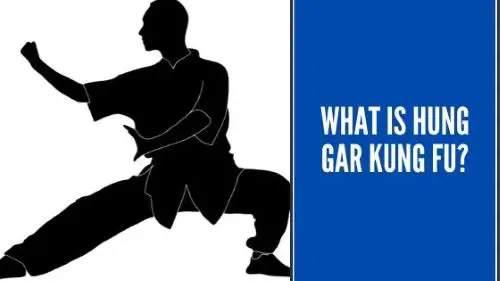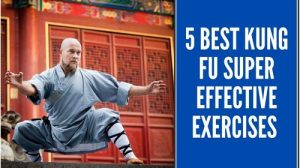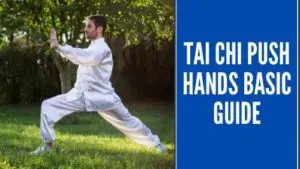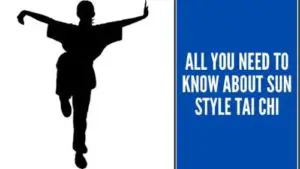Hung Gar (“fist of the Hung family”) is one of the most representative and emblematic styles of the southern SHAOLIN tradition. Created in the 18th century by Hung Hee Gung, a tea merchant from Fukien, Hung Gar is today one of the most popular styles worldwide and has contributed to the history of Chinese Martial Arts some of its most important masters.
What is Hung Gar?
Hung Gar is a kung fu system that was developed in the 17th century and is considered a Nam Pai system, that is, from the southern Chinese systems (Hung gar, Mok Gar, Choy Gar, Lau Gar, and Li Gar). Its translation is “Hung family boxing”, and it is based on tiger and crane boxing. Hung Gar is one of the most representative pugilistic styles of the martial arts practiced in southern China.
Hung Gar is characterized by its low and strong positions, stable movements, and direct penetrations. The concept of opportunity and resistance is reinforced and strong arms and legs are developed through positions such as the horse, Sei Ping Ma, the three-star punch, Da Sam Sing, or the tiger claw. It focuses on working with forms. The four that characterize the style are Gung Gee, Fu Hok, Tit Sam Kuen, and Ng Ying Kuen.
History of Hung Gar
After the destruction of the Shaolin temple of Honan, in northern China, in the mid-18th century, the most prominent systems in southern China were known by the family name of their creator: Hung, Lau, Li, Choy, and Mo. Of these “Five Families of Southern Shaolin”, undoubtedly the one that stood out most in the following centuries was created by Hung Hei Gung, both for its value in the art of combat and for its outstanding role in the fight against the Manchu invader.
The main source that inspired the creation of Hung Gar comes from a monk Shao Lin, called CHEE SHIN, who, according to the tradition, would have taught the techniques of the “Tiger’s Claw” to Hung Hei Gung in the temple of Fukien. Once he finished his apprenticeship in the temple, Hung Hei Gung resumes his life as a tea merchant and after some time he marries Fong Wing Chun. His wife, also a Kung-Fu practitioner, was related to Fong Sai Yuk, one of the greatest masters of all time who was killed by the “traitor” (Pak Mei).
According to legend, Fong Sai Yuk – is killed by Pak Mei, the well-known boxer in a battle of revenge. But according to the story, Fong Sai Yuk – was killed during the fight with Ng Mui during the burning of Shaolin. Naturally, Fong Wing Chun brought to her husband’s practices the martial tradition of her family; the light and elusive techniques of the “White Crane”. This created an excellent balance between the direct strength of the tiger and the encircling agility of the white crane.
In another oral tradition, the knowledge of the “Iron Wire” techniques, the techniques of Chi Kung which are the most superior practice of the system, is also attributed to the contribution of Fong Wing Chun.
In the successive development of Hung Gar, five basic columns were established, represented by an animal, to which a specific characteristic in combat is attributed: Tiger: explosive strength of the blows and resistance of the bones; Crane: dodge, agility, and strength of the tendons; Leopard: speed and muscular capacity; Snake: the chi, or vital energy, present at all times; Dragon: the spirit, the most important weapon of the warrior.
On these five pillars, Hung Gar built its technical repertoire. Its main characteristic lies in the vigorous and explosive use of fists, its solid leg posture, and the combination of the actions of the “Five Animals”. Later, the “Five Animals” were added the “Five Elements”, which complement the actions of the animals, allowing the creation of combinations of short and long-distance in a sequence of movements. These elements are Metal, Water, Wood, Fire, and Earth.
The Four Basic Forms of Hung Gar
Gung Gee
Gung Gee Fook Fu Kuen is the basis, probably created by Hung Hei, of the Hung Gar style and the oldest form which is complemented by three other forms called Fu Hok Seung Ying Kuen, Ng Ying Ng Hang Kuen, and Tit Sin Kuen.
The first form mentioned is, according to Master Lam Sai Wing, that which compiles the teachings acquired in the temple by Abbot Chi Zin, by Hung Hei Kwun, and by Luk Ah-Choy, although its original title was Siulam Fook Fu Kuen (Siulam refers to the Shaolin temple, so due to the persecution of the Manchus it had to be replaced by Gung Gee).
Fu Hok
The Fu Hok Seung Ying Kuen form, based on the style of the tiger and the crane, emphasizes the combination of the hard, strong, and hard techniques derived from the tiger, and the soft, soft, and subtle techniques derived from the crane. This form contains the basic techniques of Hung Gar, as well as what Lam Sai Wing called the ten unique hand techniques of Hung Gar. The long version of the form is composed of 108 steps while the old form is said to have been performed in only 36 movements.
The legend says that the original form was created by Hung Hei Kwun, mixing the tiger techniques acquired from Shaolin with the knowledge of the crane technique mastered by his wife. However, the form may have been derived from Abbot Chi Zi. Wong Fei Hung elaborated it, inspired by the tiger and the crane of Shaolin, in the positions and in the bridge hands of the style of Tit Kiu Saam (another of the ten tigers of Canton), as well as in the long-range techniques of the style of the Buddha.
Tit Sin Kuen
The most advanced and difficult form of Hung Gar is Tit Sin Kuen (iron wire) and works the internal aspect. It is a long-form that uses very short displacements. It was created around 1850 by Master Tit Kiu Saam, a practitioner of Shaolin and internal Taoist styles, mixing Hung Gar techniques with Chi Kung. Tit Shin Kuen stimulates health and hardens the forearms, being introduced to Hung Gar by Wong Fei Hung who learned it from Lam Fuk Sing, a disciple of Tit Kiu, for two years. This form was only transmitted to the best students and at the end of the learning of the rest of the style.
It is executed by emphasizing the work of breathing and the release of different sounds associated with the different organs of the body and the different emotions. Its name, iron wire, refers to the hardness of the metal and the malleability of the wire, opposite and complementary aspects that are reflected in the form.
To train the forearms, different concepts of energy called the twelve principles and twelve bridge hands are worked on through isometric exercises of dynamic tension, although traditionally it was also practiced using weights on the wrists and forearms in the form of iron rings.
Ng Ying / Sap Ying Kuen
Sap Yin Kuen (fist of the ten forms or shape of the five animals and five elements) consists of techniques of the dragon, snake, tiger, crane, and leopard. The inner work is represented by the dragon, followed by the snake and the leopard, and ends with the part of the tiger and the crane of the Fu Hok Seung Ying Kuen form. The five elements it represents are metal, wood, fire, water, and earth. It was created by Lam Sai Wing from the Ng Ying Kuen form created by Wong Fei Hung.
The practice of Hung Gar favors the general strengthening of the student since the main axis of its strategy goes through intensive training of prolonged permanence in the postures and in the exercises of isometric breathing, very present in all the forms of the system. The practice of low and solid postures allows the student to generate great power in the strikes from the legs and hips. The dynamic tension, associated with the isometric exercises, strengthens the arms and favors the manifestation of “Internal Power”.
Hung Gar Kung Fu Techniques
TUI NA JIAO – Hooking Punch (Left)
Hooking Punch is a simple but effective move that you can use in self-defense. You should not perform the hooking punch and, as most practitioners do during training sessions or competitions. It must be swift, fast, and powerful enough to cause damage to your opponent. This technique usually ends with an elbow strike to the face or neck of your opponent. A knee strike then follows when he falls from the elbow strike. You can also twist his arm around your back while behind him so that he cannot fight back.
SIU NIM TAAM DAAN – 4 Directions Smashing
4 Directions Smashing is a shock-wave pattern executed by consecutive 4 hand chops to your opponent’s head and chest. Sometimes you can refer to it as an extra technique combined with other techniques like Sau Kim Chung (rotating punch).
SIU KAAT CHEUNG – 4 Directions Cutting
This is a changed version of the Team Daan (smashing). In this one, you start with 2 chopping strikes on each side of the opponent’s throat, followed by two more to his face. You can end it by spinning around 360 degrees, then hitting him in front with your palm.
KIM CHUNG – Rotating Punch
The rotating punch is a basic but effective move in most martial arts. In Hung Gar, this technique finds use as the main attacking tool with Siu Nim Tau (the eight fundamental stances).
You start by stabbing/punching forward with your left hand, turning 180 degrees clockwise, and delivering another punch to his face. It would help if you only used this technique when you are behind your opponent.
WING CHUN KUEN – Wing Chun Fist (Right)
Practitioners based wing Chun Fist on the concept of using the body’s natural weapons to defeat an opponent. These so-called “natural weapons” include:
- The fist
- Elbow
- Shoulder
- Body structure
Wing Chun’s main goal is to preserve harmony in fights by using your opponent’s power against him. To execute Wing Chun, you must listen to his breathing pattern. This will let you know if he is about to attack. Of course, practicing with a partner who knows nothing about Wing Chun will only waste your time.
2. Hung Gar Kung Fu Stances
Bow Stance (or horse-riding stance)
The bow stance is the foundation of all kung fu stances. The knees become bent at about a 90-degree angle, with toes pointed straight forward. To maintain balance and avoid extending one’s kicks, you must remain centered in your body. You can do this by keeping your weight distributed between both feet.
The bow stance is also a stable position from which to launch various defensive or offensive techniques. You can also use it as an escape technique if you need to get out of range of your opponent’s attack. It is not a good idea to stay in the bow stance for too long as this position does not have strong attacking power.
The Crane Stance
Crane Stance (or crane kicking stance). In this stance, you keep one foot (the front leg) straight and firm while the back leg gets bent at about a 90-degree angle. The heel of the back foot should be lower than its toes, which point towards your opponent. This position allows us to extend our kicks further than standing with both feet side-by-side. It also helps us maintain balance and stability.
Horse Hoof Picking Stance (or horse’s hoof kicking stance)
The horse’s hoof picking stance is very like the crane kicking stance. Except that both feet stay side-by-side and extend only one foot forward while the other gets bent at about a 45-degree angle. The heel of your extended leg should fall below your toes so that you avoid extending too far and thus losing balance. This position requires more coordination than the crane kicking stance but allows for stronger kicks.
You can use the horse’s hoof kicking stance to execute a kick or punch technique. Like other stances, you can also use it as an escape technique if you need to get out of range of your opponent’s attack quickly. Suppose your opponent steps toward you while in the horse’s hoof picking stance; transferring some of your weight onto your opposite foot can help you move backward faster and avoid getting hit. You can refer to this as “re-balancing.”
Ready to Kick Stance (or cat paw kicking stance)
The ready-to-kick stance is like the horse’s hoof picking stance, except you only use it to launch kicking attacks. You should keep the foot of your non-kicking leg in front of that of your kicking leg, while you should bend both knees at about a 45-degree angle (be careful not to lean forward or back when you do this). Staying upright will help you maintain balance and avoid getting hit by your opponent’s attack.
3. Hung Gar Kung Fu Weapons
Dragon sword
This is a single-edge sword with a slightly curved blade with a straight or slight curve. It is a heavy weapon used when reaching for long-range agility and power through its weight as opposed to swiftness through motion. The Dragon Sword in Hung Gar got derived from other Chinese systems and originated from the Southern Shaolin styles. However, it’s more commonly associated with Northern-style Chinese martial arts weapons.
Dragon Dagger
Dragon Dagger Hung Gar weapon description Dragon Daggers are blades used for close-quarter combat. They vary in length, typically being between 10″ – 12″, but some can get up to 24″. These daggers are very light, and you can use them in combination with other close-quarter weapons.
DragonFly sword
The DragonFly Sword is a single-edge sword that directly influences Southern Shaolin styles, such as Wing Chun’s Butterfly Knives. In Hung Gar, the DragonFly Swords are small swords worn on each hip and used for quick attacks when fencing or dueling an opponent. They can also attack many pressure points such as the throat, groin (both men and women), eyes, back of the knee.







